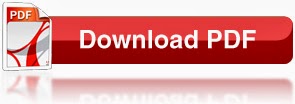




February 2017 ARTICLE LIST >>
PharmaTutor (February - 2017)
ISSN: 2347 - 7881
(Volume 5, Issue 2)
Received On: 22/09/2016; Accepted On: 28/09/2016; Published On: 01/02/2017
AUTHORS:
Jaha Sultana Mohammed Pelcat Formulation PVT ltd,
India sohnivya786@gmail.com
ABSTRACT: Ion exchange chromatography is probably the most powerful and classic type of liquid chromatography. The popularity of ion exchange chromatography has been increased in recent years because this technique allows analysis of wide range of molecules in pharmaceutical, biotechnology, environmental, agricultural and other industries for water purification to separation of various antibiotics from fermentation broths which will enhance the yields and reduce the production time for industrial process. The main objective of this particular study is to develop some understanding for the process of ion exchange and helps to determine whether or not ion exchange will be useful for a particular application. This topic includes background, theory, instrumentation, application which covers both the production of the ion exchange substance, a resin and its operation depending on the condition of matrix during use.
How to cite this article: Mohammed JS; A brief review on Ion Exchange Chromatography; PharmaTutor; 2017; 5(2); 30-38
[ABSTRACT WITH CITATION] [VIEW AS HTML]

REFERENCES:
1. B.K. Sharma; Instrumental Methods of Chemical Analysis; page. No: 123-160.
2. Willard Merritt Dean Settle; Instrumental Methods of Analysis; 7th edition; page. No: 633-639.
3. Kenneth A. Connors; A Text Book of Pharmaceutical Analysis; 3rd edition; page. No: 398 - 408.
4. Amersham pharmacia biotech; Ion Exchange Chromatography: Principles and Methods.
5. P. Parimoo; Pharmaceutical Analysis; page. No: 284 - 286.
6. Harvard apparatus; Guide to Ion Exchange Chromatography.
7. Tosoh Bioscience; Ion Exchange Chromatography.
8. Yasser M. Moustafa and Rania E. Morsi; Ion Exchange Chromatography - An Overview.
9. Dr. S. Ravi Sankar; Text book of pharmaceutical analysis; 4th edition; page. No: 16-2 – 16-10.
10. ROBERT D. Braun; Introduction to Instrumental Analysis; page. No: 850-859.
11. R. A. Day, A. L. Underwood; Quantitative Analysis; 6th edition; page. No: 535-543.
12. J. Mendham, R.C Denney, J.D Barnes, M. Thomas, B. Siva Sankar; Text Book of Quantitative Chemical Analysis, 6th edition; page. No: 213-222.
13. G. Vidya Sagar; A Text Book of Pharmaceutical Analysis; volume-II; page. No: 13 – 18.
14. Anees A. Siddiqui; Pharmaceutical Analysis; volume-I;page. No: 216 – 236.
15. Gurdeep R. Chatwal, Sham K. Anand; Instrumental Methods of Chemical Analysis; page. No: 2.662-2.672.
16. Dr. A. V. Kasture, Dr. K. R. Mahadik, Dr. S. G. Wadodkar, Dr. H. N. More; Pharmaceutical Analysis; volume-II; page. No: 39 – 47.
17. G. DevalaRao; A Text Book of Pharmaceutical Analysis; volume-II; page. No: 54 – 57.
18. Mianbin Wu, Xuewan Wang, Zhengyu Zhang and Rutao Wang; Isolation and Purification of Bioactive Proteins from Bovine Colostrum.













